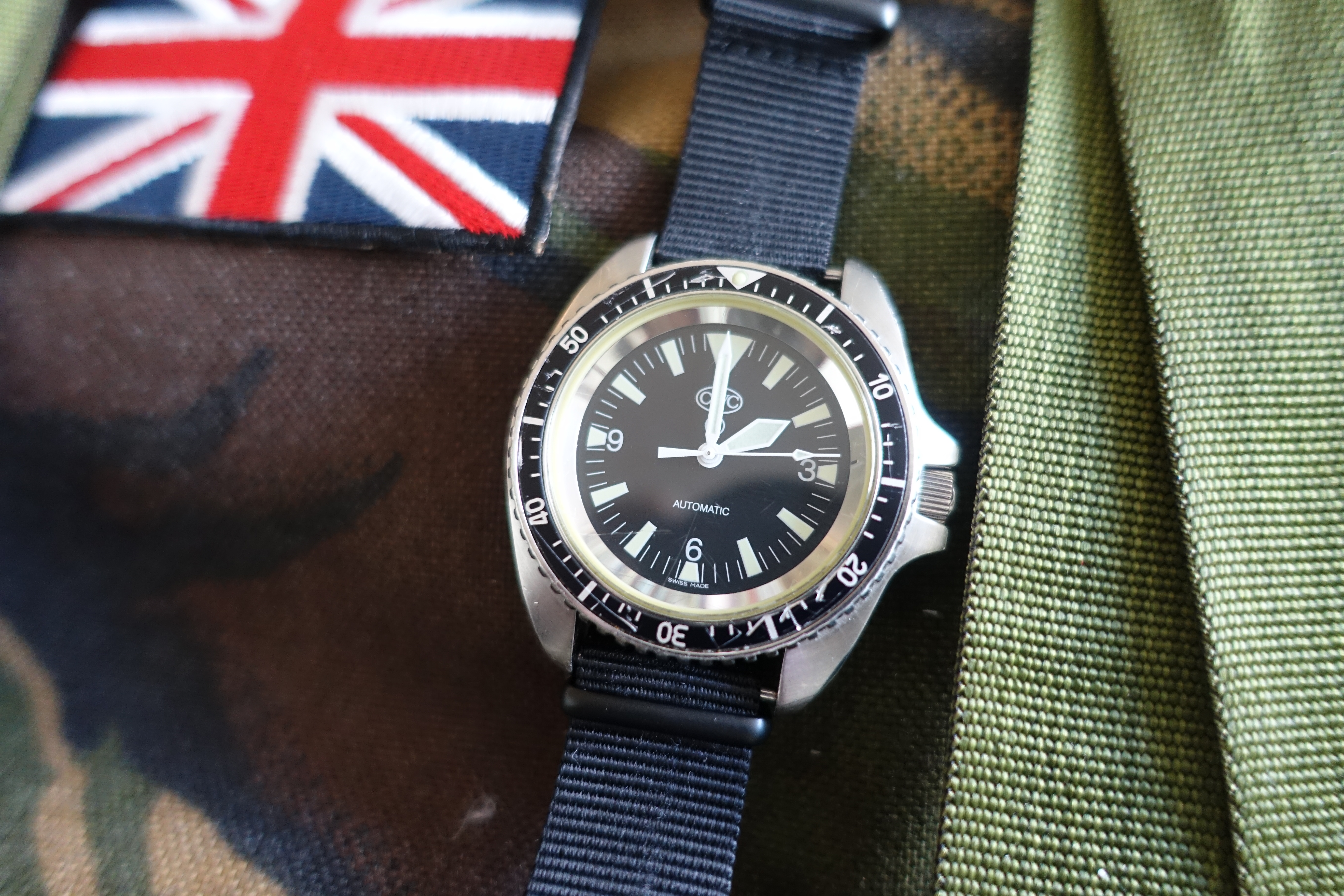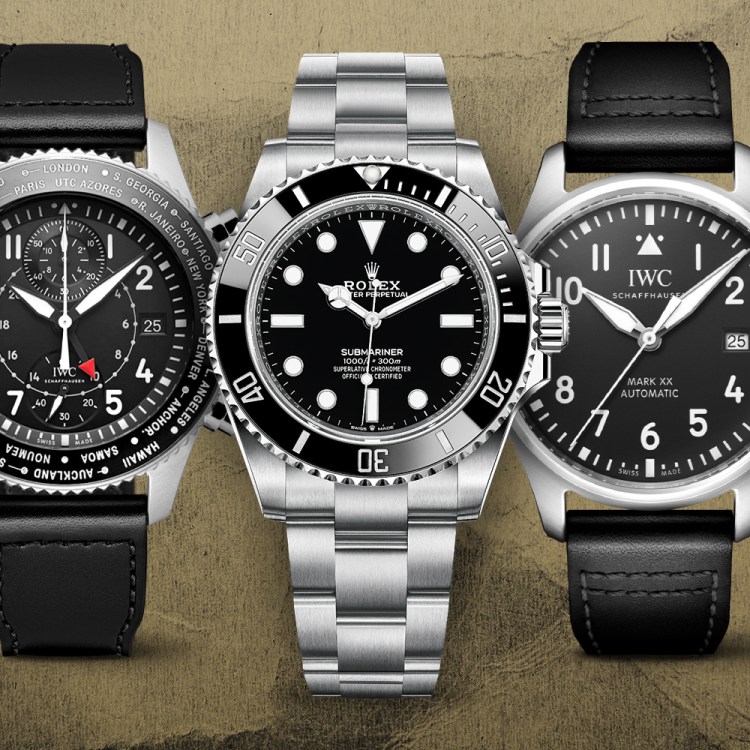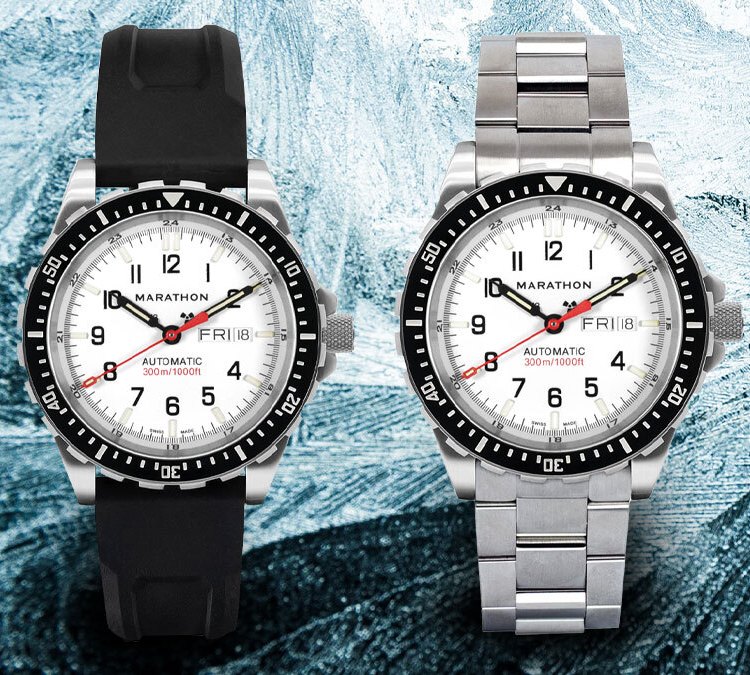A few years ago I decided to buy a good watch. I needed one for practical reasons, plus — being at an age where I could truly start to picture myself getting old — I wanted a timepiece that would be durable, but still valuable enough to pass down when “the bell tolls,” as John Donne and Metallica so rightly pointed out. I desired something that would:
- Be a fitting companion for the adventures (physical and emotional) I was going to have between now and ‘the bell.’
- Function for six decades, or more.
- Hold its value so that I could pass it down to any, as yet unborn grandchildren, with the idea that it would be worn and not thrown into the underwear drawer — which is where my wife’s grandfather’s radioactive watch ended up.
My kindergarten teacher once advised us to be proud of the things we grow and nurture, not the things we buy and own. A sensible dictum I intended to honor in my search what’s known as a tool watch. Although the term originally might have referred to watches that do more than just tell the time, nowadays, the phrase is synonymous with timepieces that are well-made, but tough enough to be worn for everyday labors, such as changing a tire, or cleaning out the garage. Unlike some of my friends, I didn’t want my watch to be a status symbol, nor for it to be perceived as ‘jewelry.’
That said, timepieces crafted well enough to go the distance often possess an unavoidable bling, on account of their superior engineering, and therefore, high cost. I should mention, too, that I’m no collector or serial number buff. As much as I admire those guys, I had no desire to build a collection (even though automatic watch-winders are cool). I simply wanted a single, quality timepiece that, with regular servicing, I could wear everyday for writing novels, teaching, driving, skiing, diving, running, black-tie events, weddings, funerals, any future military service and my volunteer police work, which requires every officer to wear a ‘serviceable watch’ at all times on duty.

Vintage watches have always been my favorite — the more original the better, even if that means scratches and faded paint. But many are radioactive. Seriously. This is exactly the reason my wife’s grandfather’s vintage, manual (wind-up) Vulcain was still in her underwear drawer and not on my wrist. Its original owner, Bert Knapp, was a famous radio broadcaster, and during Second World War served in the Eighth Air Force and received both the Distinguished Flying Cross and the Purple Heart. Despite my unrivaled admiration for the man, any watch that sets off a Geiger counter makes me nervous. There are several good articles out there on radium and its less toxic replacement — tritium. Both were used for years to create luminosity on watch dials. And although many watch collectors argue that watches with tritium and perhaps even, radium dials can be worn safely, I decided to limit my search to timepieces from the late 1990s to now — when Luminova became the industry standard to make watch dials glow.
I began my hunt trawling the Internet (when I should have been sleeping), and continually looking at other chaps’ wrists. Then, like thousands of men before me, I fell for that incomparable Siren, the Rolex Submariner — a classic diving watch, arguably made famous in the 1960s by the early James Bond films. However, most of the people I noticed wearing them were destined to spend their lives in bespoke suits, not wet suits. Which is fine. Nothing wrong with a good Huntsman three-piece, but I wanted a watch that I could knock about a bit. And call me frugal, but I think an adventure watch that starts (pre-owned) at around $7,500 is a bit much. When James Bond wore one in the 1960s, Submariners could be purchased (in today’s money) for well under $1,000. Around that time, these Rolex diving watches were standard issue to certain members of Her Majesty’s Royal Navy, and so it made sense that 007 would have one, being in Her Majesty’s Secret Service and all.
Around 1980, Rolex lost the contract with the [British] Ministry of Defense, to a company called CWC, who, on request, had designed a military diving watch, which is still so little-known today, that it doesn’t even have a name— just serial numbers, and an engraved arrow marking it as property of Her Majesty’s government, at least in theory. And so, the CWC Royal Navy automatic diving watch (Mark I), was first issued to Royal naval divers (replacing the Rolex submariner) for 1980/81.
Original CWC watches from 1980/81 (with tritium dials) are actually quite rare, and expensive when they do come up for sale. The good news is that you can buy modern versions of these iconic military watches, with quartz or automatic movements and Luminova dials for just under $1000. The quartz models are even less expensive. These timepieces can still only be purchased from one place, a military supply depot in the U.K. called Silvermans. Despite this British company’s covert position in the ‘tool’ or ‘military’ watch market, CWC is quickly gaining traction. Since I bought my diving watch several years ago, the price has gone up 20 percent.
Apart from the look, function and durability, one of the things I like about this watch is that you’ll never see it blown up on billboards, or in glossy magazine ads worn by celebrities. You can’t buy it at the mall or in Duty Free. In fact, the only place I’ve seen a CWC timepiece in the past two years has been on the wrist of an actor in a British television drama about Britain’s elite Special Forces, the SAS.
Since owning it, I’ve swum in tropical seas, squeezed into illegal taxis in rural China, run up mountains, fallen down the stairs (twice) and changed a few flat tires in pouring rain. During that time it’s never lost a second, and doesn’t appear to need servicing any time soon. It’s also worth mentioning that never once has anyone noticed or complimented me on this watch. Which means that it never stands out above my personality. After all, who would want someone to think more of them because of a particular watch on their wrist? Not me.

That’s not to say this watch is as versatile as I would have liked. My only problem with this indestructible beast is that when I wear it with a tuxedo, I feel more like a bodyguard than a guest. And so two years into owning it, I broke my own rule and bought a second tool watch. A 2004 Rolex Air King, 34mm with black dial (ref. 14000M). It cost $3000 from Bob’s Watches —which included Rolex box and papers. Two years later, the same model sells for about 20 percent more on the Bob’s website. I chose the year 2004, as that was when my daughter was born, making it a ‘birth year’ watch for her, when I eventually handed it over.
At first I had wanted a fabled (and also discontinued) 2004 Rolex Explorer I (36mm), made famous by its temporal contribution on mountain ascents and arctic expeditions. However, an Explorer I (About $5000 pre-owned) is tough enough to endure the punishment my CWC diving watch undergoes, and I wanted something to compliment the beast, not compete with it.
The roots of the Rolex Air King can be traced back to British RAF pilots during the Second World War. The watch was created as one in a series to pay tribute to the brave flyers who took part in the Battle of Britain. Who wouldn’t love that? And while 34mm might have been massive for a man’s watch 75 years ago, it looked so small my wrist, I immediately took off the bracelet, and put on black leather to create that vintage feel I love, without the radiation.
In hindsight, the Rolex Explorer I (ref. 14270) would have been ‘the one’ timepiece capable of doing it all. And there may come a time when I get one. But there is something about the font of the Arabic numerals that I don’t like, when compared with the font used by Rolex on the Explorer in the 1960s. For now, I still enjoy the brooding power of the CWC divers’ watch, and the classic, vintage look of my 2004 discontinued Rolex Air King— which is small enough at 34mm for my wife to wear sometimes. Both tool watches have a strong military ancestry that I find alluring, and both are expected to function for the next 50 years. Hopefully by then, they’ll be like me—faded and unmistakably vintage — but somehow, still ticking on, a true relic of its time.
This article was featured in the InsideHook newsletter. Sign up now.






















